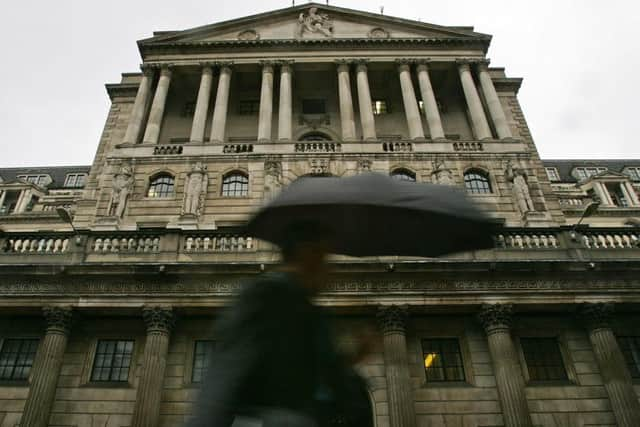House prices up 20,000% since Bank of England nationalised


Today marks the seventieth anniversary of the Bank’s nationalisation by Clement Attlee’s Labour government, on 1 March 1946.
In part, the Bank was created to fund King William’s war against France. Its modern successor has altogether more peaceful purposes. One of its jobs is securing the stability of the financial system. Its second and longer-standing task is controlling inflation, which the monetary policy committee (MPC) has sought to do since 1997.
Advertisement
Hide AdAdvertisement
Hide AdIn the decades following nationalisation, inflation was a curse on Britain’s economy. Price increases averaged 4 per cent a year in the 1950s and 1960s, rising to 13 per cent in the 1970s and a still high 6 per cent in the 1980s.


The nadir was in 1975 when prices rose by 24 per cent, meaning that every £10 you had on New Year’s Day bought just £7.60 of goods on the following New Year’s Eve.
High and volatile inflation was an obstacle to economic progress. It discouraged investment by creating uncertainty about how prices would move in future, leading people and businesses to spend too much time trying to avoid its effects than on more productive activities. Inflation eroded fixed incomes, like many pensions, and rescued some who had made otherwise bad decisions.
Today the Bank faces a quite different challenge. At zero per cent last year, inflation was at its lowest level since before nationalisation.


Near-zero interest rates and quantitative easing are designed to bring inflation back towards the 2 per cent target, a “Goldilocks” number that is neither too high nor too low.
Prices have risen by 2,800 per cent since nationalisation but with considerable variation around that average. Basic foodstuffs like bread, milk and cheese have all risen at a faster pace, with an unsliced white loaf up 6,500 per cent. A pint of beer costs 4,300 per cent more, while a first class stamp has risen by 6,200 per cent.
In 1946, a Hillman Minx set you back £442 whereas a Ford Focus now costs almost £16,000, a rise in the price of a family car of 3,500 per cent.
Perhaps not surprisingly, the most striking inflation has been in housing, where the average price is almost 20,000 per cent higher.
Advertisement
Hide AdAdvertisement
Hide AdDespite inflation, we are all very much better off. Prices might have risen almost three-fold but the purchasing power of the average income is four times its 1946 level. The reason is that we have collectively become much more productive, using innovations and ideas of various kinds to squeeze much more from the resources at our disposal.
The Bank of England wasn’t William Paterson’s last mark on history. He was one of the promoters of the Darien scheme. It cost him his fortune and his wife and daughter their lives.
Thankfully, governor Mark Carney and his colleagues don’t engage in such ventures today, but let’s wish them well with the important task of controlling inflation as the Bank marks this important anniversary.
• Stephen Boyle is chief economist at Royal Bank of Scotland